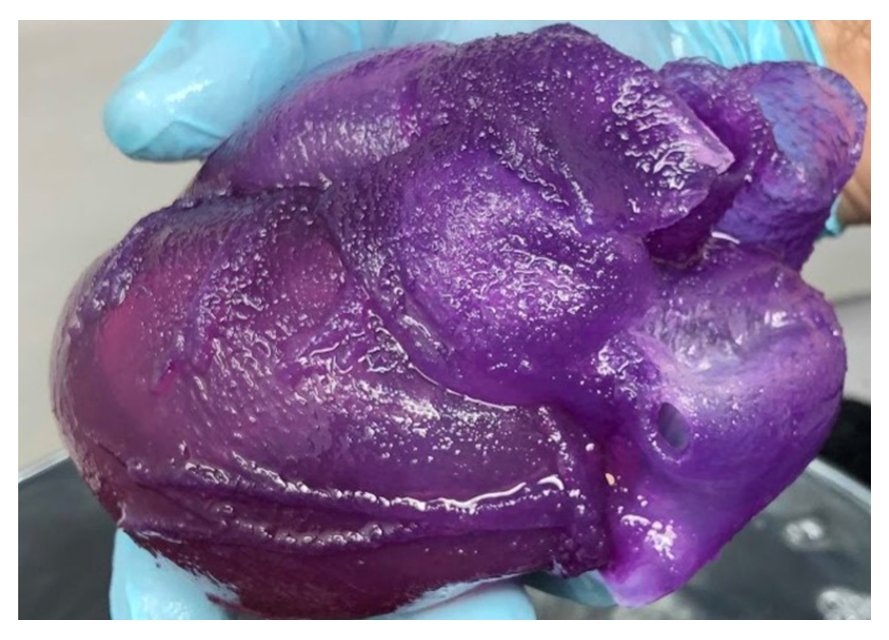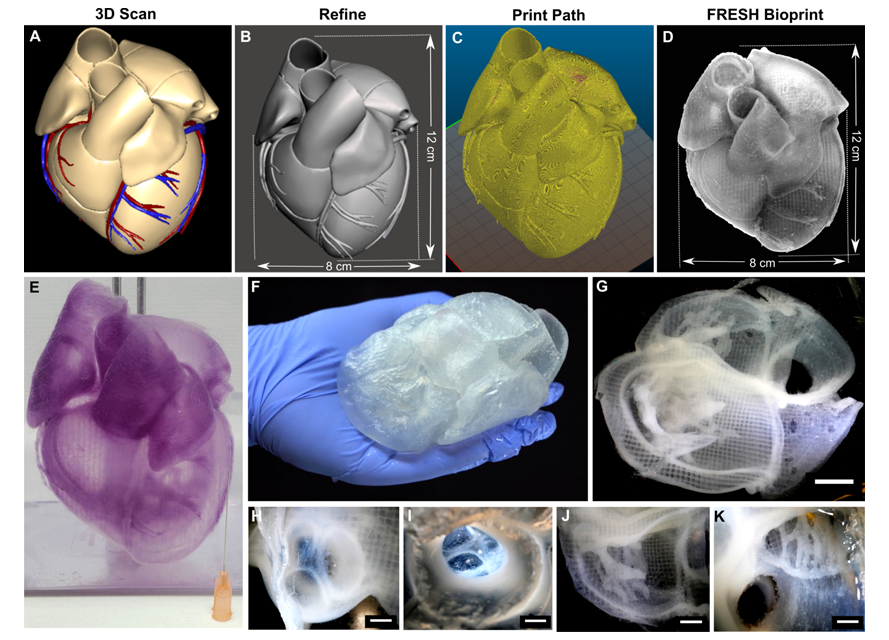A cross-disciplinary team of scientists at Carnegie Mellon University College of Engineering have just brought an ambitious what-if plan to fruition. The team has created a full-size 3D bio-printed human heart model.
Yes, it is just a model but, but it realistically mimics the elasticity of cardiac tissue and could be useful for medical research.

Those behind this model at Carnegie Mellon University (CMU) are Adam Feinberg and his team in the Departments of Biomedical Engineering and Materials Science and Engineering.
They managed to print this artificial heart through special bioprinting with a 3D printer, using custom materials and a technique called FRESH, which stands for Freeform Reversible Embedding of Suspended Hydrogels. Their 3D printer was custom made to hold a gel support bath large enough to print at the desired size and some software changes served to maintain the speed and fidelity of the print.
“FRESH 3D printing uses a needle to inject bioink into a bath of soft hydrogel,” said the school’s news story about the heart model, “which supports the object as it prints. Once finished, a simple application of heat causes the hydrogel to melt away, leaving only the 3D bioprinted object,” the researchers explain.
Jumping the hurdles
The work is a culmination of several years of research. Machine Design talked about what was new and what was not new about the Carnegie Mellon marker: Full-size organ models have been replicated before, using 3D printing techniques, but the materials had a tendency of not being ideal for replicating the “feel” and mechanical properties of natural tissue.
Now, this team was focused on getting the right materials to get the artificial structure to behave just like the real thing. They were aware that soft, tissue-like materials, such as silicone rubbers, often collapsed when 3D printed in air, making it difficult to reproduce large, complex structures.
They used something called alginate, a naturally occurring polymer, as the alginate could mimic the elastic modulus of cardiac tissues. Alginate is a soft, natural polymer, with properties similar to real cardiac tissue. They placed sutures in a piece of alginate to hold even when stretched. This suggested how surgeons could practice procedures on a heart model made from the alginate material.
That is just one potential application. Although hospitals might have facilities for 3D printing models of a patient’s body, the tissues and organs can currently only be modeled in hard plastic or rubber. The Carnegie model would enable manipulation in ways similar to a real heart.
Crticial steps taken

Feinberg is interested in working with surgeons and clinicians to fine-tune the technique and ensure readiness for a hospital setting.
The paper discussing their work has been published in ACS Biomaterials Science and Engineering. Lead author Eman Mirdamadi recognized that major hurdles still exist in bioprinting a full-sized functional human heart, but this is a foundational groundwork—and showing immediate applications for realistic surgical simulation.
Feinberg concludes:
“While we have not yet achieved printing a whole adult-sized functional heart, what we have done is really taken critical steps along that path.”


